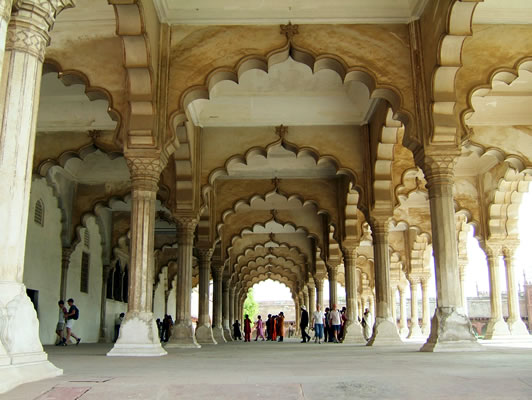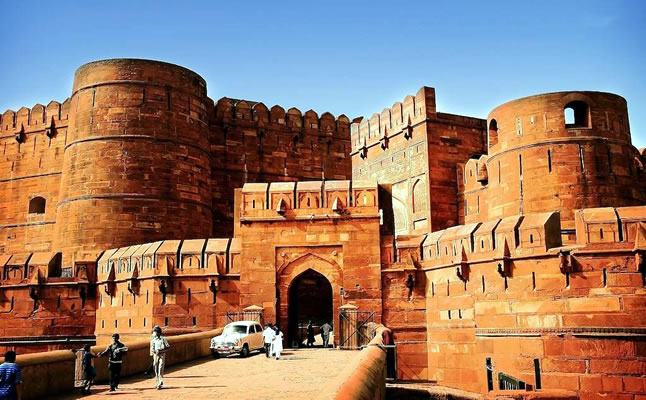Humayun’s Mosque
(1530 A.D.)
Hindi Version | View Gallery |
|
[Not a valid template]This mosque was built by Humayun’s order in the year of his accession (1530). It has a persian inscription which also records that it was financed by Sheikh Zain Khawafi. He was a poet and an important noble and friend of Babur (1526-30). It was built to cater to the religious needs of the mughals who had founded gardens and set up their residences in this locality, whereby it was called ‘Kabul’, by the local people, as Babur noted in his memoirs. [Not a valid template]It is a five-arched mosque, entirely built of brick masonry with profuse white plaster work over it. The central nave has a lofty iwan on its face, almost concealing the dome behind it, like the begumpuri masjid of Muhammad- Bin-Tughluq at Delhi (C. 1343) and Sharqi Mosques of Jaunpur (1376-1478). Each wing has double days, in two aisles, thus having four chambers on either side. All these were roofed by cupolas. The southern wing has fallen down. It was exteriorly ornamented by glazed-tiles. [Not a valid template]There is no stone-work and, obviously, it has been built in the preceding lodi style. Humayun’s astronomical observatory was also situated in its vicinity, on the river-bank. It is in ruins and a large baoli (step-well) and a monolithic stone block with 12 steps have remained in situ. At present, it is called ‘Gyarah Sidi’. |




